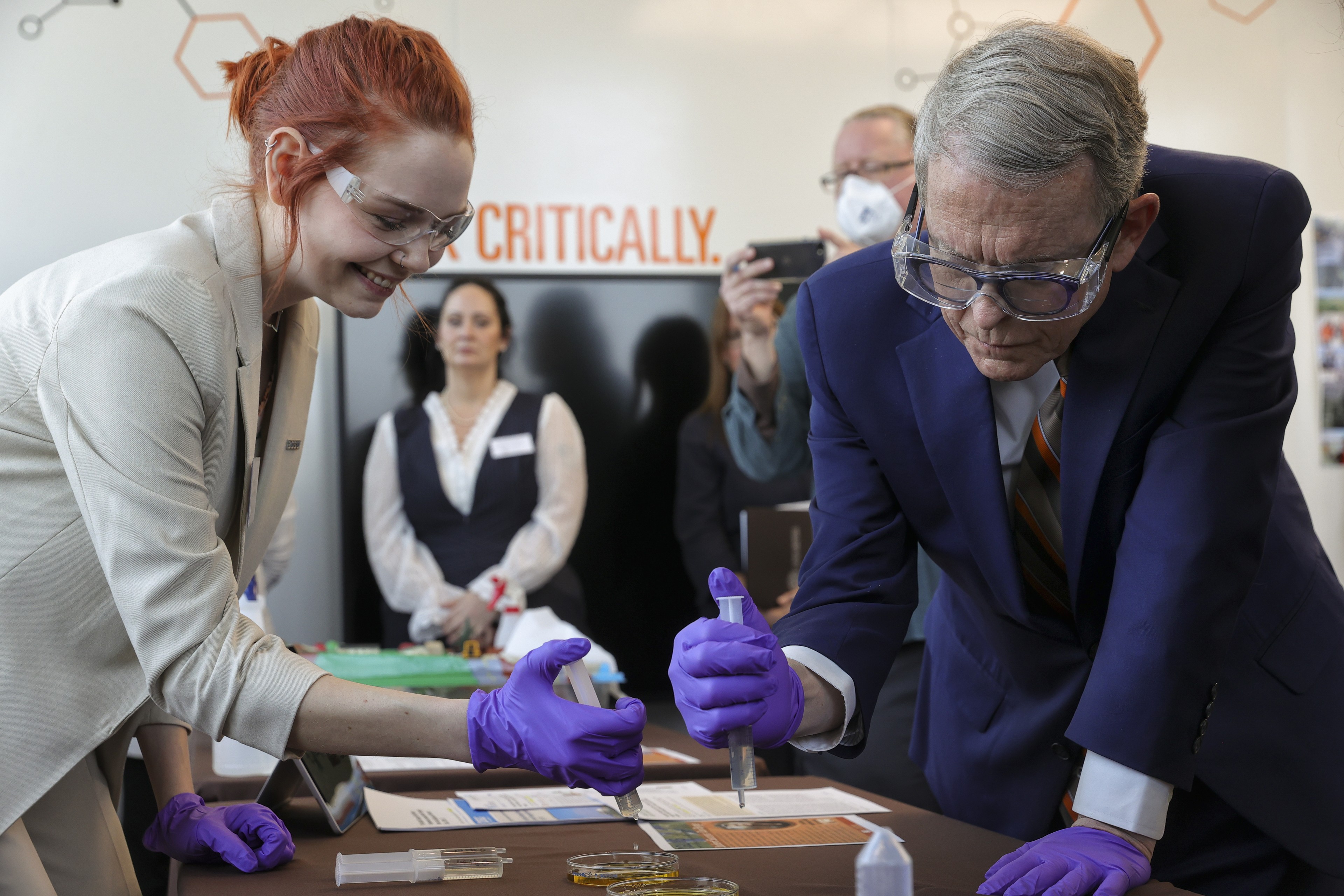
Gov. DeWine visits BGSU to highlight importance of water-quality research
Governor speaks about H2Ohio initiative, which aids University scientists in quest to study Ohio's water issues, including algal blooms
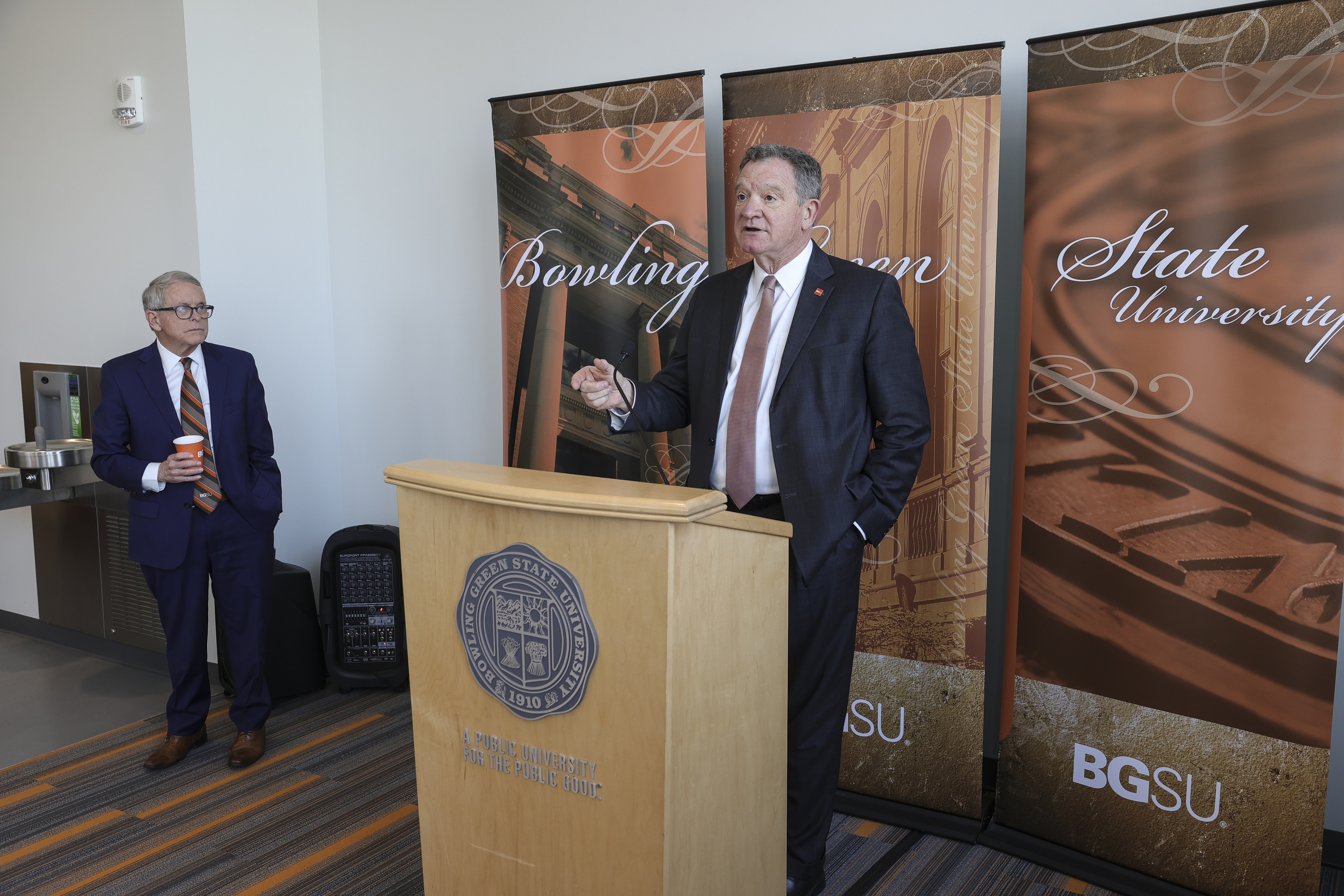

Calling it a “moral obligation” to care for Lake Erie, Ohio Gov. Mike DeWine on Tuesday visited Bowling Green to reinforce the importance of the state’s H2Ohio initiative and hail the ground-breaking research being done by several teams of Bowling Green State University scientists in multiple disciplines.
The governor said the 2014 algal bloom in the Western Lake Erie Basin – which temporarily rendered Toledo’s water as undrinkable – was the catalyst for the initiative, which launched in 2019 and earned $172 million in funding from the Ohio General Assembly for 2020-21.
One of just four universities to receive funding from the National Science Foundation and the National Institute of Environmental Health Sciences, BGSU has used those funds as well as those from H2Ohio to study the effects of Harmful Algal Blooms (HABs) and improve water quality.
“As a public, comprehensive, high-research University, BGSU is committed to leading discovery, supporting initiatives and providing solutions to address problems in Ohio and beyond,” said BGSU President Rodney K. Rogers. “This research activity, which is possible through H2Ohio, will have a positive impact on communities across the state. We are grateful for Ohio Gov. DeWine and our state leaders’ support to help lead this collaboration. Our faculty and students will remain focused on water quality research, and together, we will create public good and drive the economic and health vitality of Ohio for years to come.“
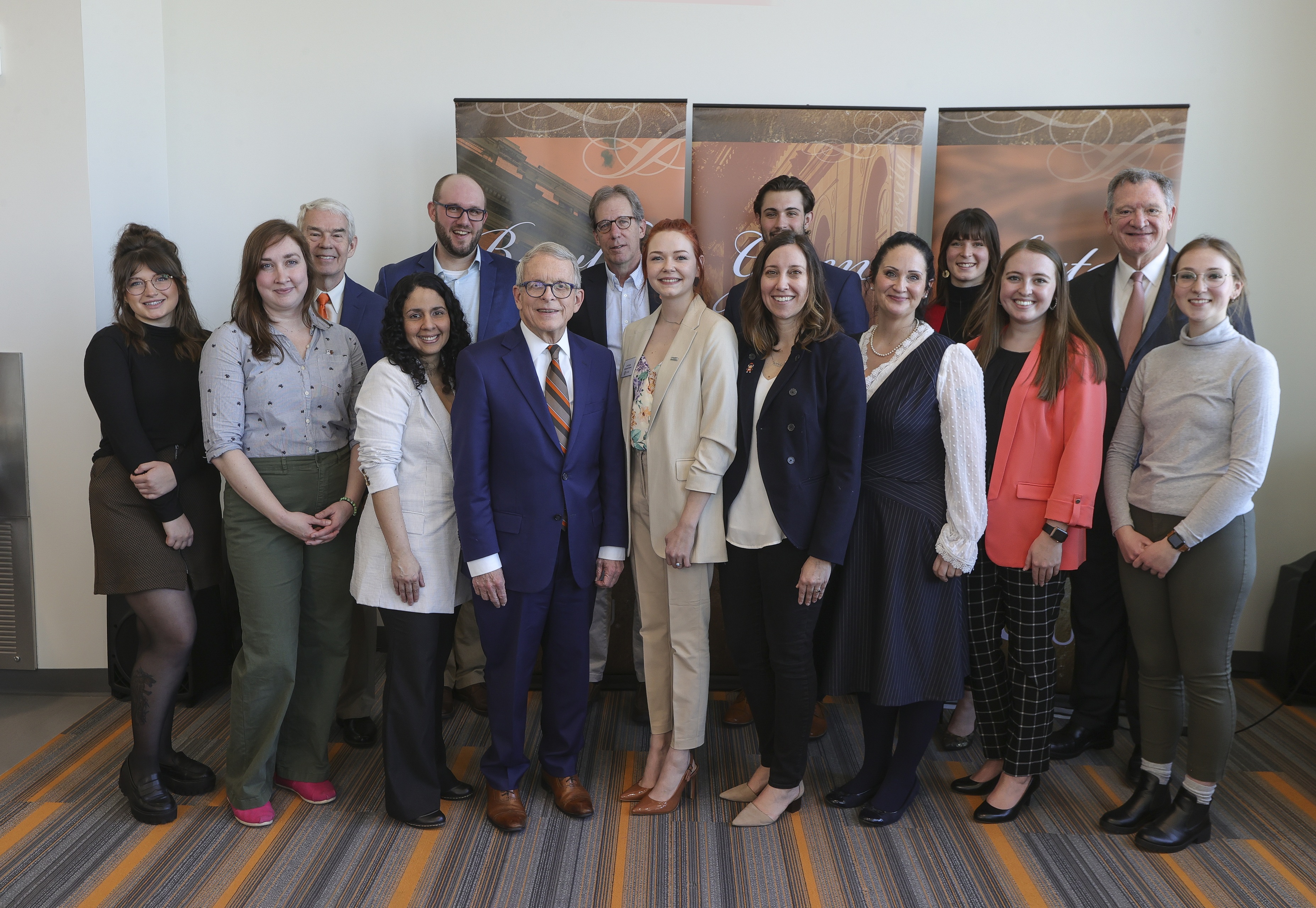
During the visit, the governor heard from students and faculty on a variety of initiatives from the Great Lakes and Watershed Studies (GLWS), an interdisciplinary group of researchers led by Dr. Shannon Pelini and Dr. Alexis Ostrowski, that is studying the environmental and societal issues impacting watersheds, developing implementable solutions, and training the next generation of scientists in the Great Lakes region and beyond. Students actively participate in the research and public outreach activities.
Project presentations included:
Development of Novel Toxin Detection Technologies
Faculty Member: Dr. George Bullerjahn, Director of NIEHS and NSF-funded Great Lakes Center for Freshwaters and Human Health and Emeritus Professor, Dept. of Biological Sciences
Student Participants: Kate Brown, Ph.D. student, Biological Sciences and Katie Barker, master’s student in Biological Sciences
Pilot Watershed Project
Faculty Members: Dr. Angélica Vázquez-Ortega, Assistant Professor, School of Earth, Environment and Society, Dr. Shannon Pelini, Co-Director of the Great Lakes and Watershed Studies and Associate Professor, Biological Sciences
Student Participant: Katarina Kieffer, undergraduate student in geology
Biodegradable, Photoresponsive Hydrogels for Recycling of Nutrient Fertilizers
Faculty Member: Dr. Alexis Ostrowski, Co-Director of the Great Lakes and Watershed Studies and Associate Professor, Department of Chemistry and Center for Photochemical Sciences
Student Participant: Cori Byrge, BGSU alumna, current master's student
Actionable Science to Understand, Mitigate, and Adapt to Cyanobacterial Harmful Algal Blooms
Faculty Member: Dr. Chris Ward, Assistant Professor, Dept. of Biological Sciences
Student Participant: Kate Lochridge, undergraduate student in marine biology and studio art
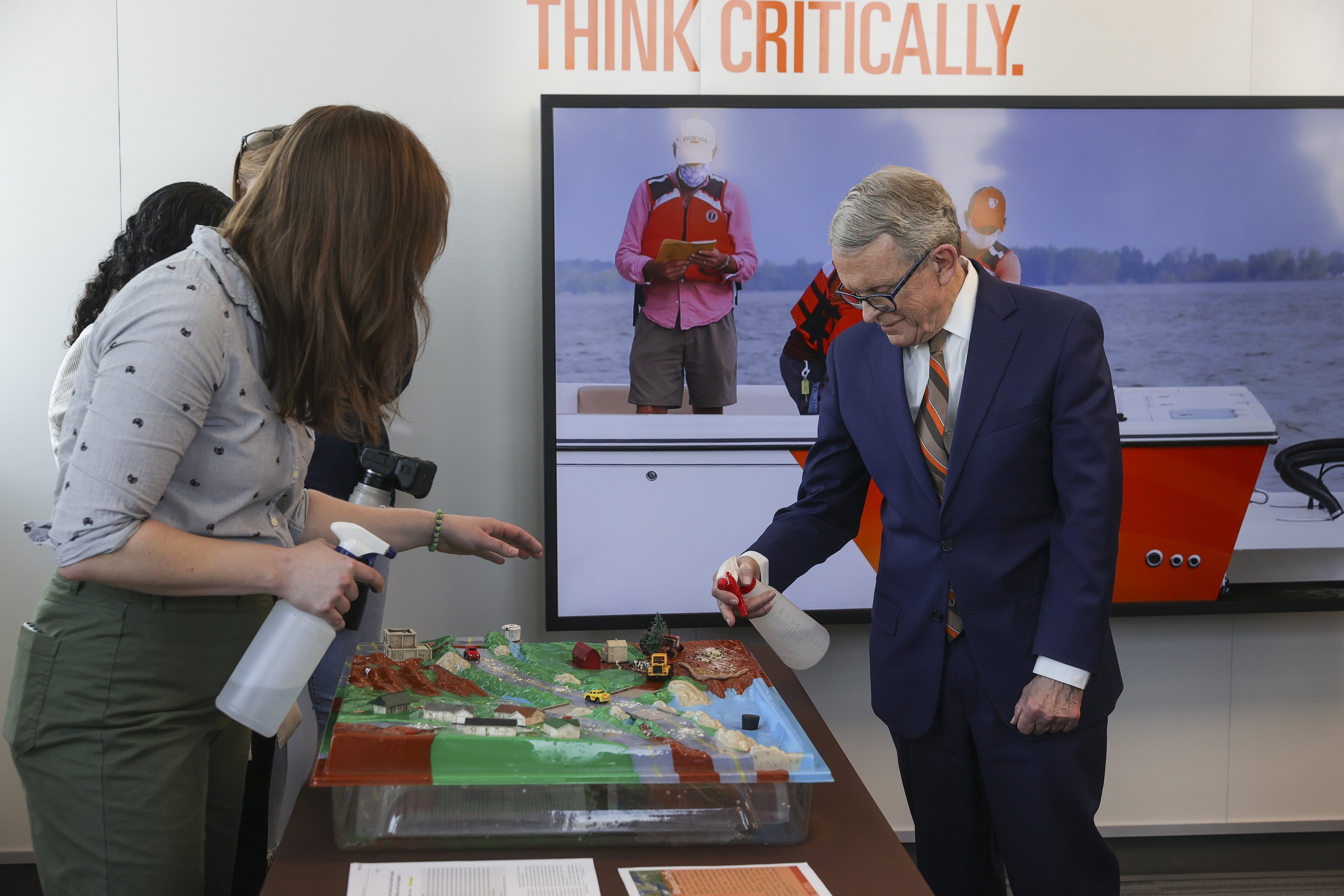

As water quality impacts every citizen every day, BGSU research into understanding and mitigating HABs cuts directly to the core of the University mission of doing public good – and researchers have confronted the problem and examined solutions from multiple angles.
Dr. George Bullerjahn, an emeritus professor at BGSU, has been one the leaders in the field as the director of the Great Lakes Center for Fresh Waters and Human Health. Recently, Bullerjahn took part in the "Winter Grab," a major effort to understand how the Great Lakes operate during the winter, which includes the presence of algal blooms underneath the ice.
In the soil category, Dr. Angélica Vázquez-Ortega, an assistant professor in the School of Earth, Environment and Society, is leading a team of researchers to study sustainable farming processes that can both help farms become more efficient and reduce nutrient runoff into the Western Lake Erie Basin.
Associate chemistry professor Dr. Alexis Ostrowski's innovative research into hydrogels offers a potential solution for curbing nutrient runoff that causes algal blooms, and the resulting product soon could be commercially available.
Elsewhere in Biological Sciences, Dr. Christopher Ward last year published research for the U.S. Department of Energy into chytrid infections and more sustainable long-term strategies for controlling pests.
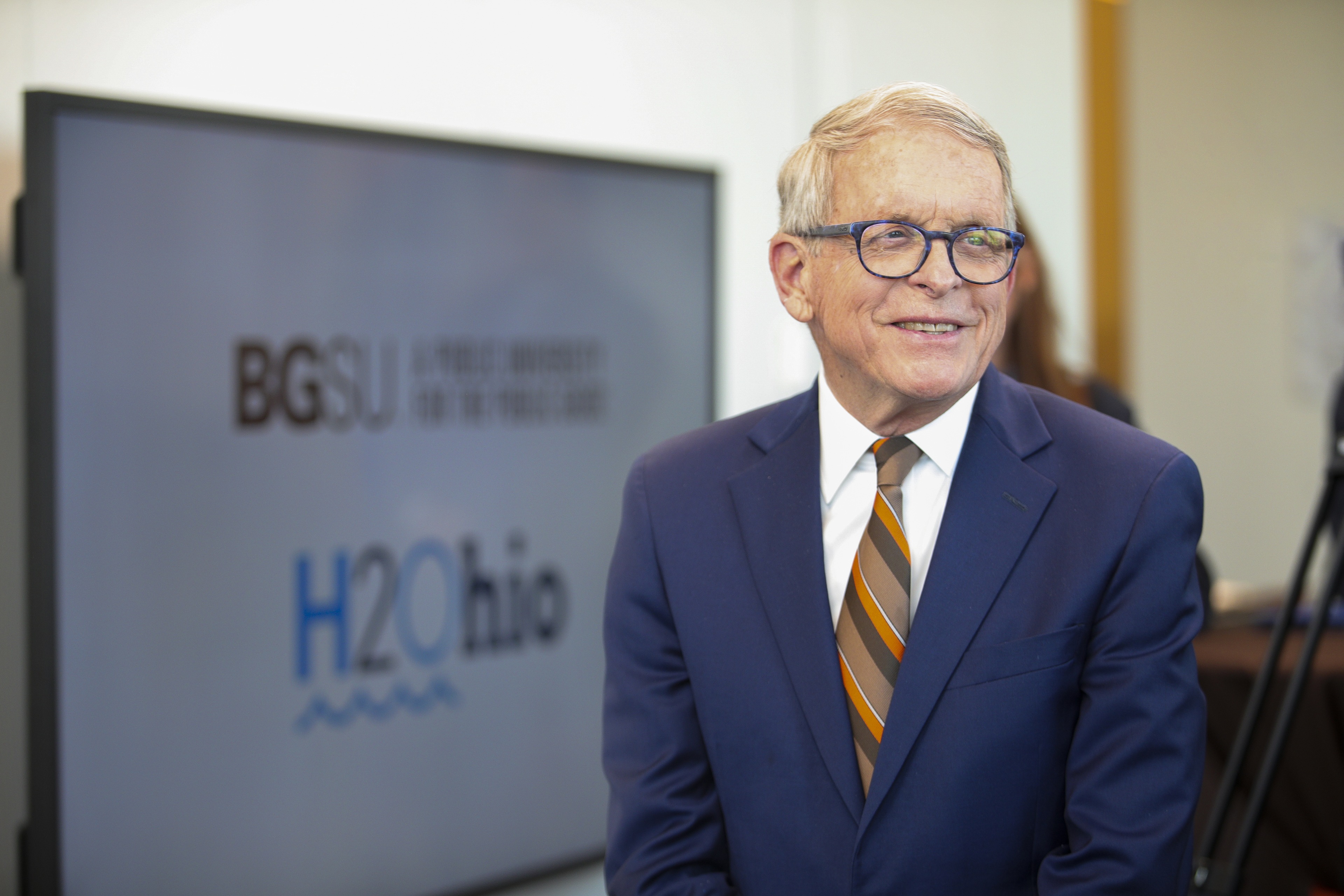
This April, BGSU is celebrating Earth Month with a full calendar of events aimed at promoting and encouraging sustainable practices. Upon completion of its Climate Action Plan, the University has pledged to be carbon neutral by 2040.
Related Stories
Media Contact | Michael Bratton | mbratto@bgsu.edu | 419-372-6349
Updated: 09/28/2022 11:16AM



